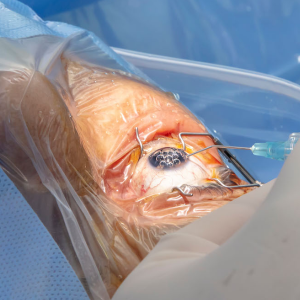The Cataract
Cataracts in simple words
A cataract is a clouding formed on the lens of the eye which is clear under normal occasions. A person with cataracts would be seeing things like looking through a frosted up window pane.
3 main types of cataract
- Nuclear Sclerotic Cataracts
The Nuclear sclerotic cataracts is the most common type one could experience. This form of cataract starts forming in the centre of the eye and as an effect the lens is being hardened. As it progresses, the lens of the eye becomes clouded and will visually represent itself in a shade of yellow or brown colour. Being able to see at further distance will be very very difficult.
- Cortical Cataracts
Cortical Cataracts starts developing around the edges of the lens. It slowly but surely progresses towards the centre of the lens in a radial manner.
- Posterior Subcapsular Cataracts
A Posterior Subcapsular Cataract begins as a tiny, opaque surface that most commonly forms near the back of the lens and in the path of the light. One could experience interference in their reading vision and less than optimal vision in bright light conditions. Also, it usually produces halos or glare around light sources at night.
Can the cataract be cured ?
The only way to move forward unfortunately is surgery. There is no other way to combat the condition once the cataracts has formed. No medical approach can remove already existing cataracts and no eye-wear products that could effectively counter their effects either.
What are the after effects of a cataract operation ?
Effects may be include but are not limited to: - Blurry vision - Floaters - Flashes of light - Glare - Nausea - Dry eye
Phaco meaning in ophthalmology
Phacoemulsification, or Phaco for short, is a small incision performed on the side of the cornea. The cornea is the dome-shaped surface located in the front of an eye. Through the aforementioned incision, the surgeon inserts a probe into the eye. This instrument emits ultrasound waves that shatter the lens. The fragments are then being suctioned out. Afterwards, an intra occular lens (IOL) is being inserted.
What is a phaco handpiece ?
A phaco handpiece is an instrument used by a surgeon during a phacoemulsification procedure. The handpiece utilizes Ultrasonic movement as well as energy created by Piezoelectric crystals.
How does a phaco handpiece work ?
The device converts electric energy into mechanical vibratory energy through the use of piezoelectric crystals. A strain develops when an electric charge is applied to opposite faces of the crystals, resulting in deformation.
What type of energy is used during phacoemulsification?
Piezoelectric crystals exhibit a relationship between mechanical stress and electricity. The device converts electric energy into mechanical vibratory energy.
What are the advantages of phaco
- Day surgery – Quick operation and no need for hospitalization
- Limited induced astigmatism – Incisions made are between 2.5mm-5mm
- No bandaging or further precautions
- Immediate recovery of good vision within a few days
- Return to your normal activities from the next day
- Full recovery expected between one and two weeks

